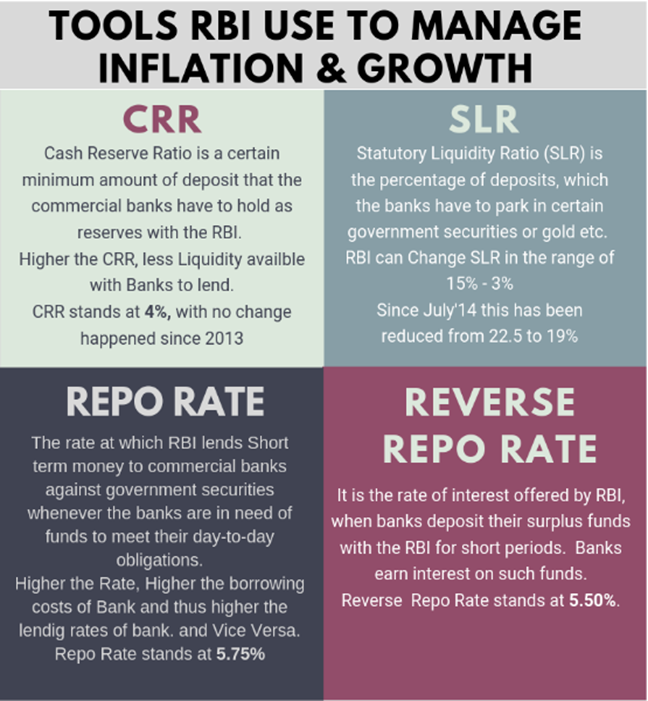Thursday, 12th May 2022
Rise in bond yields
In News
India’s benchmark bond yields touched 7%, after the monetary policy committee of the RBI indicated its intent to gradually withdraw surplus liquidity.
How repo rate affects bond yield?
- A bond yield is the return an investor realizes on that bond.
- Hence, a bond's yield is based on the bond's coupon payments divided by its market price; as bond prices increase, bond yields fall.
- Falling interest rates make bond prices rise because investors are seeking a better return. So, bond yields fall.
- Conversely, rising interest rates causes bond prices to fall, as investors park their funds with the banks, and so, bond yields rise.
- Interest rates rise due to monetary policy decisions like a rise in repo rate.
Effects of high bond yield
- Higher bond yields lead to costlier borrowing for the government.
- They also raise the borrowing cost for corporates tapping debt markets, as the corporate bond market tracks the movement in G-sec yields.
- A higher cost of capital impacts the profitability of companies and affects the investment cycle.
- Moreover, since banks are the largest holders of government securities, including state development loans (SDLs) and treasury bills, any volatility in the bond market is expected to hit Bank’s income.

Way Forward
- The government reportedly wants the central bank to buy back government securities (G-Secs), a move that might lead to tempering of yields from the current levels.
- Experts say it is difficult to do that now when the central bank is in a monetary tightening mode.
- RBI could use Operation Twist, under which it sells short-term bonds and buys long-term securities, making the whole operation liquidity-neutral.
- This brings down long-term yields, while short-term yields go up.
- In the past, Operation Twist has helped reduce the term spread between 10-year and one-year bonds, flattening the yield curve.
- Meanwhile RBI has said that it preferred other measures such as easing investment rules for banks to boost demand for government securities.
- The RBI may consider easing the so-called held-to-maturity investment norms for banks, allowing them to buy more debt without marking losses as these measures have more impact than open-market purchases.
Sources:
- The impact of rising bond yields and options before RBI
- Govt asks RBI to lower bond yields as inflation risks spiral: Report
- Government wants RBI to lower bond yields: Report
- Bond yield sharply rises after RBI’s surprise rate hike
- RBI open to steps to cool bond yields: Report
- How Are Bond Yields Affected by Monetary Policy?
Foreign Contribution (Regulation) Act (FCRA)
In News
The CBI has held officials for allegedly accepting bribes to give clearances under FCRA, 2010 to certain NGOs.
Understanding FCRA
- What is it? Foreign Contribution (Regulation) Act (FCRA) is a law enacted by Parliament to regulate foreign contributions(especially monetary donations) provided by certain individuals or associations to NGOs and other organizations within India.
- Enactment: It was first enacted in1976 and amended in 2010 and 2020.
- Nodal Ministry: It falls under the purview of the Ministry of Home Affairs (MHA).
- Objective:The law aims to prevent the use of foreign contribution or foreign hospitality for any activity detrimental to national interest.
- Exemption: Section 50 of the Actallows the Central government to issue orders exempting any organisation (apart from political parties) from the provisions of FCRA if it feels it necessary or expedient in the public interest, subject to conditions specified in the order.
Latest Amendments to FCRA Rules
- In 2019, the MHA amended FCRA rules where it stated that even persons prohibited to receive foreign fundssuch as journalists, politicians, members of the judiciary “are allowed to accept foreign contributions from their relatives” if the amount does not exceed Rs. 1 lakh and MHA needs to be informed for any such transaction above Rs. 1 lakh.
- In 2020, Section 17 of the Act was amended and a new provision was inserted.
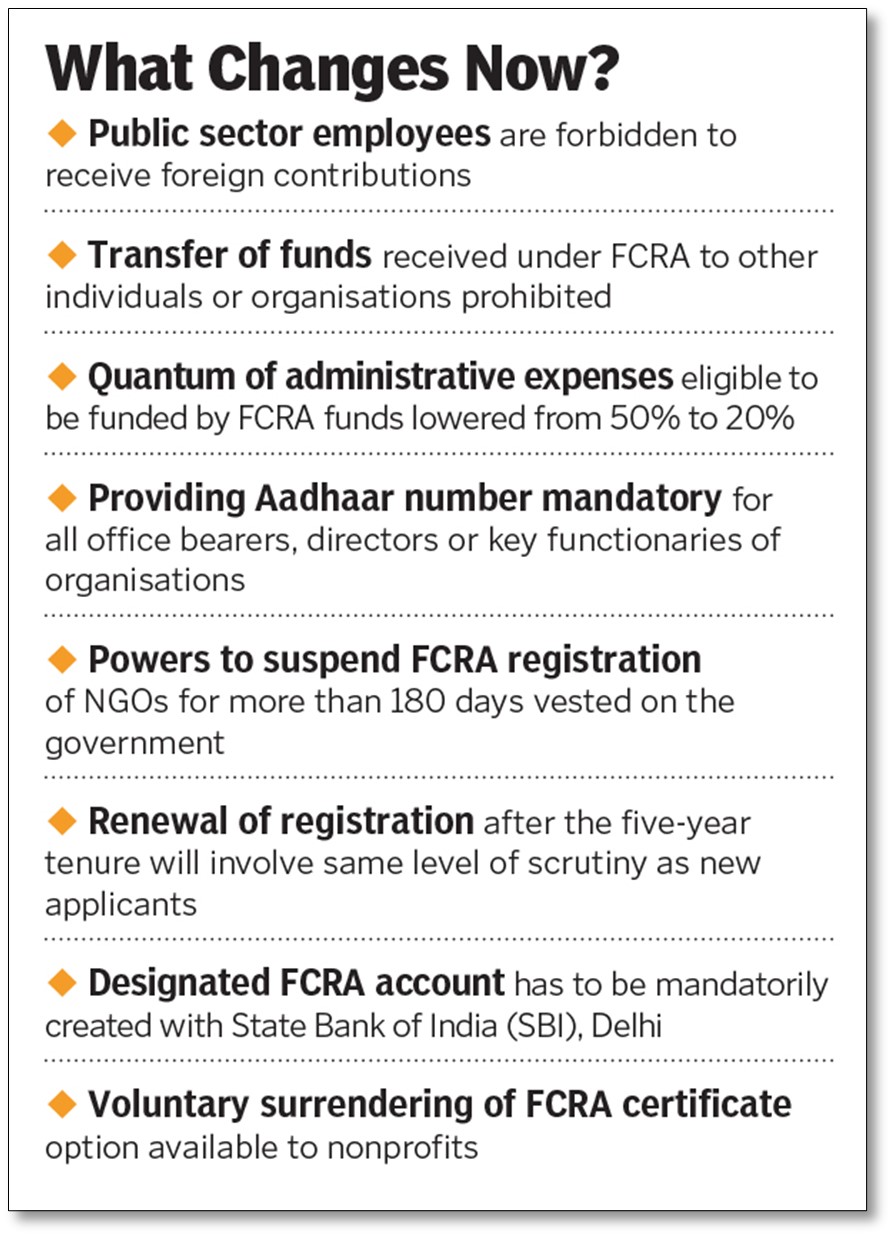
-
- Donations are given in Indian rupees (INR)by any foreigner/foreign source including foreigners of Indian origin like Overseas Citizen of India (OCI) or Persons Of Indian Origin (PIO) cardholders should also be treated as foreign contributions.
- Foreign contributionhas to be received only through banking channels and it has to be accounted for in the prescribed manner.
- Any violation by the NGOor by the bank may invite penal provisions of The FCRA, 2010.
FCRA related issues
- The act prohibits the receipt of foreign contribution “for any activities detrimental to the national interest”.
- However, there is no clear guidance on what constitutes “public interest”.
- The restrictions also have serious consequences on both the rights to free speech and freedom of association under Articles 19(1)(a) and 19(1)(c) of the Constitution.
- Freedom is based on the idea that individuals can form voluntary groups and pursue various interests.
Source:
- Explained: What is FCRA, the law related to NGO funding which certain MHA officials are accused of violating?
- CBI investigates NGO-official nexus; Raids over foreign contribution violations in 40 locations
- India tightens oversight on funds received by NGOs
Image source:
Prayers at Protected Archaeological sites
In News
The Archaeological Survey of India (ASI) has expressed its concern after prayers were held at the ruins of the eighth-century Martand Sun Temple in Jammu and Kashmir.
About the News
- A religious event was held in the at the ancient Martand Sun temple in Mattan, Anantnag.

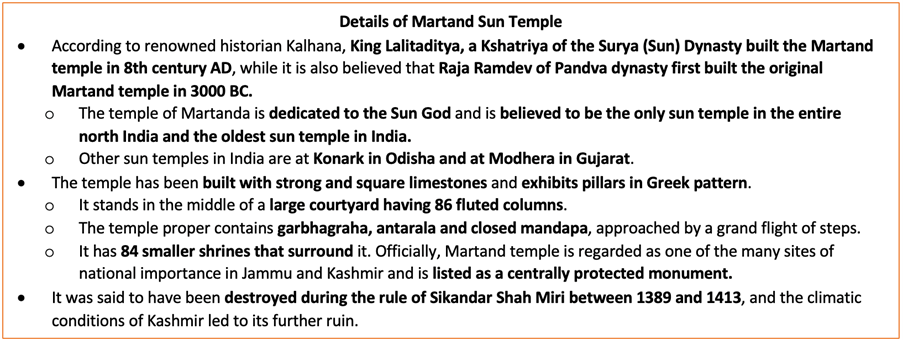
- The ASI has denied it issued any permission for holding puja at the core protected area on the premises.
- It was for the first time that the puja of this scale was held within 200 meters of the core protected site.
ASI Rules for offering prayers at Protected sites
- Prayers are allowed at its protected sites only if they were “functioning places of worship” at the time it took charge of them.
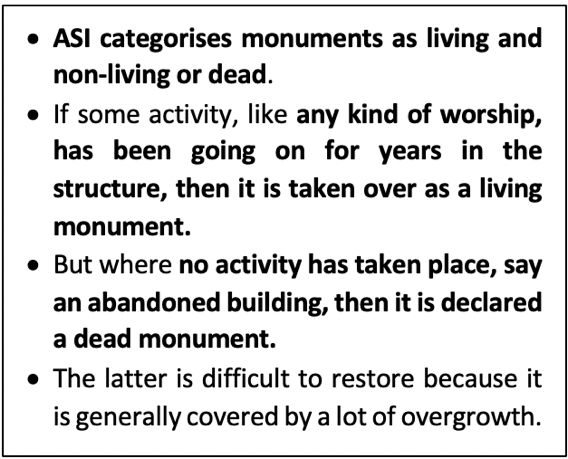
- No religious rituals can be conducted at non-living monuments where there has been no continuity of worship when it became an ASI-protected site.
- Although the Martand Sun Temple was once a thriving place of worship, at the time the ASI took over the temple ruins in the 20th century for conservation, no puja or Hindu ritual was being held there.
- Hence, according to ASI norms, the temple is considered a non-living monument.
- Examples of living ASI monuments include the Taj Mahal in Agra, Dayaram Fort in Hathras, Nila Mosque in Delhi’s Hauz Khas Village, Bajreshwari Devi Temple in Himachal Pradesh’s Chamba
- However, worship may be allowed at non-living site with written permission granted by the Central Government.
Sources:
- Explained: When are prayers allowed, not allowed at protected archaeological sites?
- MARTAND SUN TEMPLE
- Puja event at ASI-protected Martand Temple in Kashmir stokes controversy
- Oldest Sun temple in pathetic state:
- J&K LG's Prayers at Martand Sun Temple in Violation of Rules, Say ASI Officials
- Tracing the History, Heritage and Scenic Beauties of Martand and Chatbal Destinations in Twin Parganas of Mattan And Kuthar
- World Heritage Day: Shut monuments decay faster says senior archaeologist KK Muhammed
Jodhpur
On May 12 1459, Jodhpur was founded by Rao Jodha. It was historically the capital of the Kingdom of Marwar.
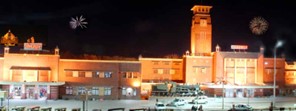
Jodhpur is popularly known as Sun City, Blue City and the Gateway of Thar Desert. The city is the gateway to the Thar Desert and was once part of the celebrated silk route from central Asia to the sea ports of Gujarat , the city retains the flavour of trading centre. Except few days of monsoon the sun shines brightly rest of the year over the city, hence the name Sun City. Jodphur’s economy is primarily from its handiwork and furniture making, which is estimated as a $200 million dollar industry.
Sources:
India-France relationship
In News
Indian Prime Minister recently visited France to discuss issues of bilateral and mutual interests.
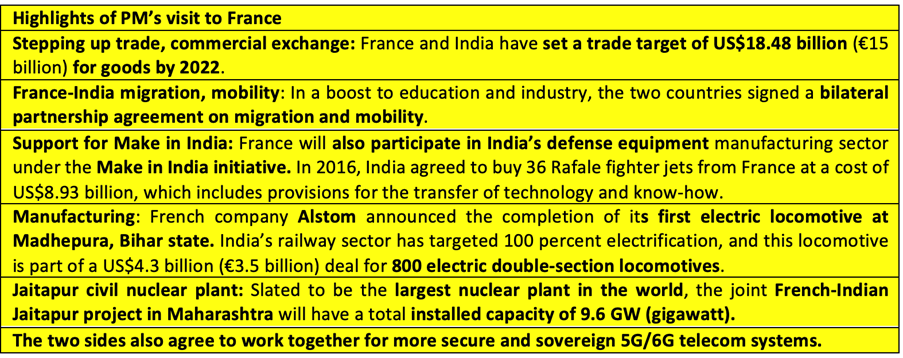
Areas of Co-operation between India and France
- Strategic partnership: India and France have traditionally shared close and friendly relations, leading to the two countries entering into Strategic Partnership in 1998.
- Support for India: France has continued to support India’s claim for permanent membership of the UNSC and the reforms of the United Nations. Besides, France has also provided consistent support to India’s candidature for the membership of all the four Multilateral Export Control regimes, viz. Nuclear Suppliers Group (NSG), the Missile Technology Control Regime (MTCR), the Wassenaar Arrangement (WA) and the Australia Group (AG).
- Military Cooperation: Two countries have a range of military cooperation including three services defence exercises; viz. Exercise Shakti, Exercise Varuna, Exercise Garuda.
- Defence and Security: France supports India’s defence-related projects including- Purchase of Rafale aircraft, P-75 Scorpene Project for six Scorpene submarines etc.
- The maritime cooperation between India and France has reached new levels of trust and will continue through exercises, exchanges and joint endeavours throughout the Indian Ocean.
- Space Cooperation: ISRO and French Space Agency, CNES have also inked joint satellite missions. France is a major supplier of components and equipment for the Indian space programme.
- Both countries have signed an agreement for the cooperation on Gaganyaan Mission.
- CNES has also agreed to co-operate in ISRO’s Venus instrument, VIRAL (Venus Infrared Atmospheric Gases Linker.
- Civil Nuclear Cooperation: France supported India in the landmark agreement on civil nuclear cooperation under which it provided for the implementation of EPR for the Jaitapur Nuclear Power Project (JNPP).
- Economic Cooperation: France is an important bilateral investment and trade partner of India with more than 1000 French companies present in India with a total turnover of US$ 20 billion. France also supports the efforts of India and EU to negotiate a comprehensive EU-India Broad Based Trade and Investment Agreement.
- Cooperation in the fields of S&T and Education: France also supports mutual recognition of degrees to facilitate the pursuit of higher education by Indian students in France and French students in India and increase their employability.
- India and France have strengthened cooperation between their cyber security agencies in an increasingly digitalised world.
What are the potentials of Indo-French relation?
- Boost to ‘Make in India’ policy: Under the ‘Make in India’ policy India is looking towards France to make Safran aircraft engines and make air independent propulsion submarines to utilize the already existing manufacturing line at the Naval Dockyards in Mumbai.
- Terror front: India and France can work together for adoption of the Comprehensive Convention on International Terrorism (CCIT) in the UN.
- Bilateral trade: The total volume between the two countries remains far below potential. India-France bilateral trade stood at USD 7.86 billion which constitutes only 1.41% of India’s total international trade.
- Major French companies present in India: Almost all the major French companies are present in India including Renault, Capgemini, Airbus, Total and others. Also, India’s Reliance, Tata, Mahindra, L&T and other big companies have tied up joint cooperation with major French companies like Dassault, SAFRAN, Thales, Scneider Electric and others in the defence and electronics sector.
- France actively cooperating in Indian programmes: France has been actively cooperating with various Indian programmes, especially three Smart Cities, viz. Chandigarh, Nagpur and Puducherry.
- India and France have agreed to start a bilateral space security dialogue. This will be the third country with which India will be engaged in a space security dialogue, apart from the United States and Japan, with such dialogues beginning in 2015 and 2019, respectively.
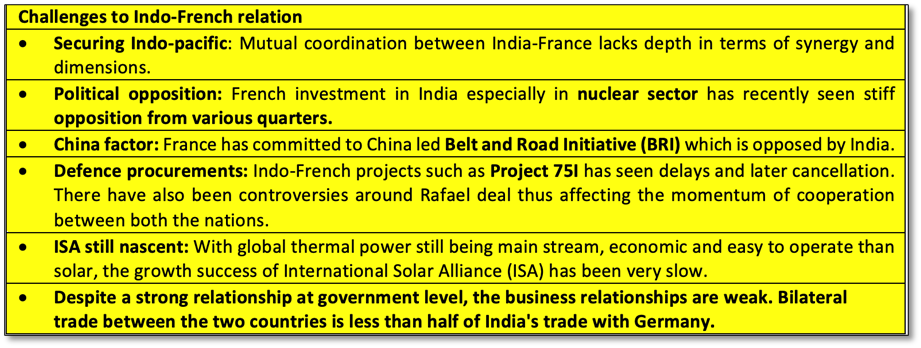
Conclusion: Considering the diminishing role of the U.S. in international politics, combined with the rise of China in the world economy, the Indo-French axis throws up multifaceted opportunities for Europe and Indo-Pacific.
Question: Discuss the areas of co-operation between India and France.
Sources:
Rani Chennamma
This is image of the statue of Rani Chennamma, recently inaugurated by a political leader in Kittur in Belagavi district, Karnataka. One of the first female rulers to rebel against the British Empire was Rani Chennamma. As the ruler of Kittur, she fought against the British and became a folk hero in Karnataka. She was trained in archery, sword fighting and horse riding and quickly became known for her bravery and skills. At the age of 15 years, she was married to Mallasarja Desai, the ruler of Kittur.
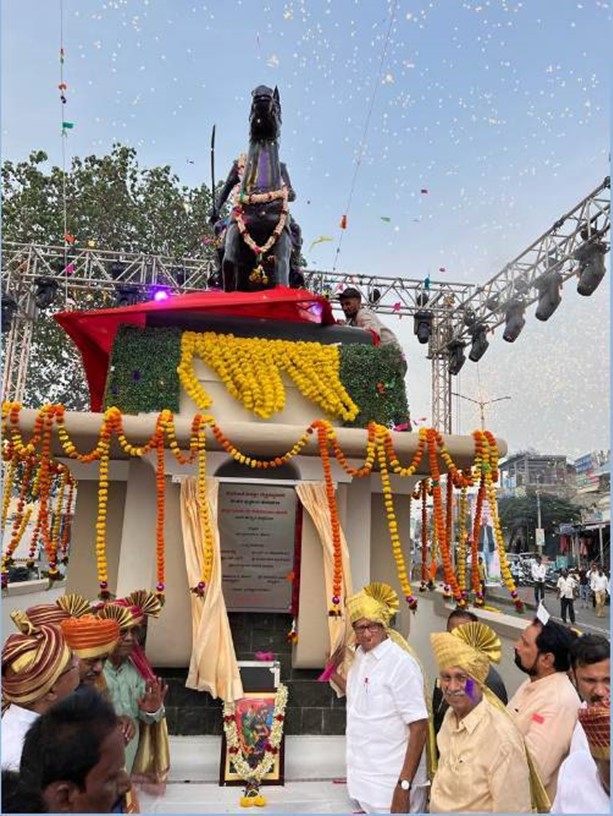
Chennamma’s adopted son was not accepted by the British East India Company on the grounds of the Doctrine of Lapse introduced by Lord Dalhousie. She was imprisoned in the Bailhongal Fort by the British, where she spent her time reading holy books. Rani Chennamma belonged to the Lingayat community, which accounts for about 7 per cent of Maharashtra’s population. Lingayats make up about 16 per cent of Karnataka’s population. The Lingayats too emerged as a reactionary force against Hinduism in the twelfth century. Lingayat, also called Virashaiva, member of a Hindu sect with a wide following in southern India that worships Shiva as the only deity.
Sources:
Taiwan strait - Edukemy Current Affairs
- Context: China’s military has recently monitored and warned a US warship that had sailed through the sensitive Taiwan Strait.
- Taiwan Strait, also called Formosa Strait, is at the arm of the Pacific Ocean, and is 100 miles (160 km) wide at its narrowest point.
- It is located between the coast of China’s Fukien province and the island of Taiwan (Formosa).

- The strait extends from southwest to northeast between the South and East China seas.
- The chief ports in the region, are Amoy in mainland China and Kao-hsiung on Taiwan.
- Also, the area lies in a typhoon zone.
- Shipping routes from the Far East to the South Seas, the Indian Ocean and Suez have to pass through the Taiwan Strait, one of the great thoroughfares of world navigation and hence is of Geopolitical Significance .
Source
Image source
Pulitzer Prize
- Context: A team of four Indian photographers have won the 2022 Pulitzer Prize for feature photography for their coverage of the Covid-19 crisis in India.

- The Pulitzer Prize is the most coveted award for journalists, and is announced by America’s Columbia University on the recommendation of a board.
- A member of the Ghadar Party in America, Indian-American journalist Gobind Behari Lal, was the first from India to win the Pulitzer Prize for journalism in 1937.
- The awards were instituted according to Pulitzer’s will, framed in 1904, where he made a provision for the establishment of the Pulitzer Prizes as an incentive to excellence.
Source
Image source
Village of Honey
- Context: Manghar, in Maharashtra’s Mahabaleshwar has become a Village of Honey, the first such in the country.
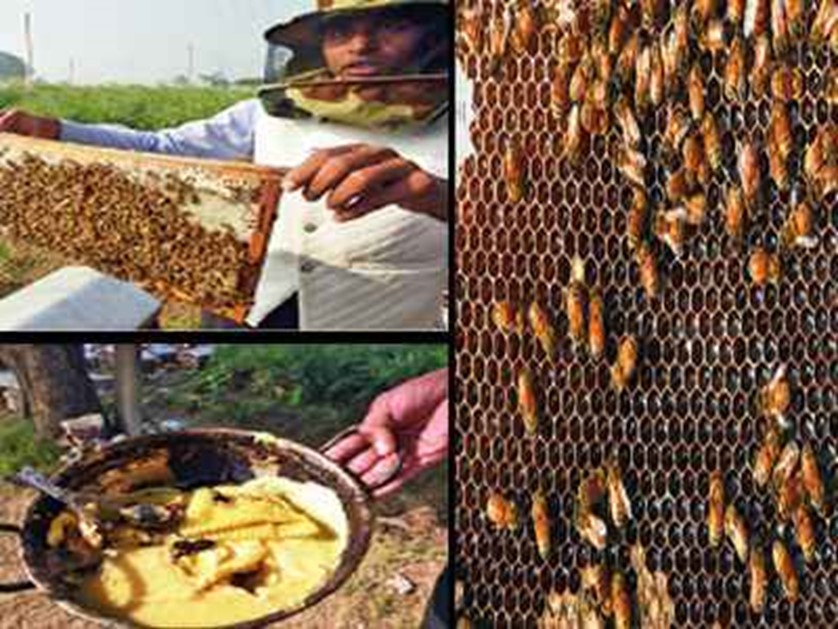
- The Khadi and Village Industries Commission will be implementing Project Honeybee under which the Village of Honey scheme of Maharashtra government.
- Under the “Village of Honey” initiative special efforts will be taken to increase the number of honeybees in the region.
- While Mahabaleshwar forms the nucleus of the apiary operations in the state, most of the households at Manghar are involved in this sector. Of the 1.25 lakh kg honey produced in Maharashtra, around 35,000 kg is produced in and around the hill station.
- Also, the idea is to make people understand the importance of honeybees in agriculture and ecology.
Source
- State govt to launch honey tourism at village near Mahabaleshwar on May 16
- Maharashtra: Manghar to become first 'Village of Honey' on 16th May; will also provide job opportunities to rural sectors
Image source
'Baby Berth' in Indian Trains
- Context: The Lucknow division of the Northern Railway zone has made a special arrangement of 'Baby Berth' in trains.

- The arrangement includes addition of a lower berth especially for the children.
- This berth is also being dubbed as 'baby berth', for little children, and was experimented on Mother's Day.
- This berth will prove to be beneficial for women passengers who travel with their children.
- The railways will also provide a stopper as a security measure next to the berth so that the small child does not fall down while going to sleep.
- Railways have installed this special berth in one compartment on a trial basis.
Source
Image source
Still a long way for termination as an unconditional right: The Hindu
Essence: The author talks about the Medical Termination of Pregnancy Act, 1971, of India, which attempts to give abortion rights to females even before many developed nations stood for individual rights for women. Few amendments were made in the MTP Act in favor of women- reducing the hurdles and increasing the during for pregnancy termination in specific cases.
Though it might seem that women's rights related to pregnancy are available in the country, the specifics of law seem to contradict. Eg IPC holds termination of pregnancy by any individual without medical grounds as a criminal offense. Moreover, the women need to have medical opinion of one or two doctors on specific grounds- grave injury to the woman/rape/failure of contraceptive/abnormalities in the child. While the court judgements seem to support women rights, eg privacy right of women to hold a fetus, the govt not making such amendments in the 2021 modifications highlights apathy for women considerations. Limited purview of legal rights fail to give the right of women to bodily autonomy, privacy and hence right to life under article 21.
Why you should read this article?
- To know the legal grounds of termination of pregnancy.
- To understand how the law fails to address women autonomy over her body.
Source:
Supreme court 's verdict on sedition is a small win: Indian Express
Essence: The editorial provides a glimpse into the recent turn of events on petition challenging the sedition law (IPC 124A) under the grounds that it no more is a good law. Central goat's response has changed from time to time, earlier defending the law and now claiming that the law needs reforms and that it needs time to consider the changes.
The editorial speaks of the loopholes, lacunae and less clear judgement which would continue to lead the civil society into the clutched of sedition law. Eg there is no absolute stay on fresh cases. Lower courts would entertain the request to grant bail and prohibit arrests. Similarly, staying all pending trials would refuse seeking justice for the appeals against such arrests. Police, previously continued to arrest people on the unconstitutional IT Act and would continue to do so under the garb of UAPA and National Security Act even if IPC 124A is struck down. The whole ecosystem of criminal justice around such laws needs to change.
Why you should read this article?
- To know the issues and loopholes around the SC judgement on sedition.
- To understand the course of events leading to govt re-examining IPC 124 A.
Supreme court 's verdict on sedition is a small win
Time to solve a solvable encroachment problem: Livemint
Essence: Government is actively dealing with encroachment by vendors and shops and rightly so. However, another kind of encroachment, one by big vehicles parked on spots their owners neither own nor rent by way of a parking fee, is being neglected.
Lands clogged by these vehicles can create more serious problems like blocking access to a hospital or slowing down movement of fire fighter vehicles. Problems become more serious if we consider predictions of increase in vehicle count as the country will become more prosperous. At any given moment, most of them are stationary, occupying space unpaid for.
Land is a scarce resource. Hence, the government should start pricing such uses of land, especially for those who can afford to pay.
Why should you read this article?
- To understand the problem of land encroachment because of increasing vehicles and unpaid for parkings.
Source:
A Teacher Beyond Curriculum
Background
- When a child is born with a disability, people begin to treat them differently, with sympathy or pity, rather than inspiring them to join the mainstream.
- Lata Nayak, founder principal of Rotary Sanskardham Academy for Children with Special Needs (RSA), has been working to provide such special needs pupils.
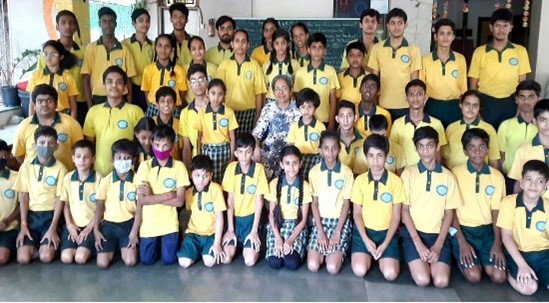
About Lata Nayak and her School:
- After obtaining her Ed. (Deaf) in Mumbai in 1987, Lata travelled to the United States on a Rotary scholarship to pursue her master's degree.
- She founded the school with the Parents & Teachers Association in a shed in Mumbai, in 1995, with 24 kids.
- RSA is now a full-fledged academy housed in a four-storey structure that includes a junior college, vocational training centre, audiology and speech therapy unit, gymnasium, computer lab, science lab, library, and other amenities.
- Using a combination of signs and symbols in innovative teaching approaches has resulted in better delivery and results for students.
- RSA also teaches gymnastics, sports, and cultural activities to students, such as cricket, football, karate, Mallakhamba, painting, dancing, and drama.
- In collaboration with corporations, professionals, and volunteers, RSA is also focusing on self-employment and teaching students in IT, ITES, retail, tailoring, drawing/painting, dance, theatre, culinary, and other fields.
- Lata's accomplishments and dedication to the cause earned her numerous prizes, including the National Award for Best Teacher (2006) and Best Individual Working for Disability (2011).
Quote: “A teacher affects eternity; he can never tell where his influence stops.”- Henry Brooks Adams
Source:
Share the article
Get Latest Updates on Offers, Event dates, and free Mentorship sessions.

Get in touch with our Expert Academic Counsellors 👋
FAQs
UPSC Daily Current Affairs focuses on learning current events on a daily basis. An aspirant needs to study regular and updated information about current events, news, and relevant topics that are important for UPSC aspirants. It covers national and international affairs, government policies, socio-economic issues, science and technology advancements, and more.
UPSC Daily Current Affairs provides aspirants with a concise and comprehensive overview of the latest happenings and developments across various fields. It helps aspirants stay updated with current affairs and provides them with valuable insights and analysis, which are essential for answering questions in the UPSC examinations. It enhances their knowledge, analytical skills, and ability to connect current affairs with the UPSC syllabus.
UPSC Daily Current Affairs covers a wide range of topics, including politics, economics, science and technology, environment, social issues, governance, international relations, and more. It offers news summaries, in-depth analyses, editorials, opinion pieces, and relevant study materials. It also provides practice questions and quizzes to help aspirants test their understanding of current affairs.
Edukemy's UPSC Daily Current Affairs can be accessed through:
- UPSC Daily Current Affairs can be accessed through Current Affairs tab at the top of the Main Page of Edukemy.
- Edukemy Mobile app: The Daily Current Affairs can also be access through Edukemy Mobile App.
- Social media: Follow Edukemy’s official social media accounts or pages that provide UPSC Daily Current Affairs updates, including Facebook, Twitter, or Telegram channels.



